How to Wish Eid al-Adha: Meaningful Greetings Guide
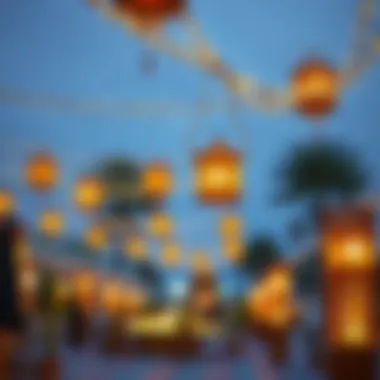
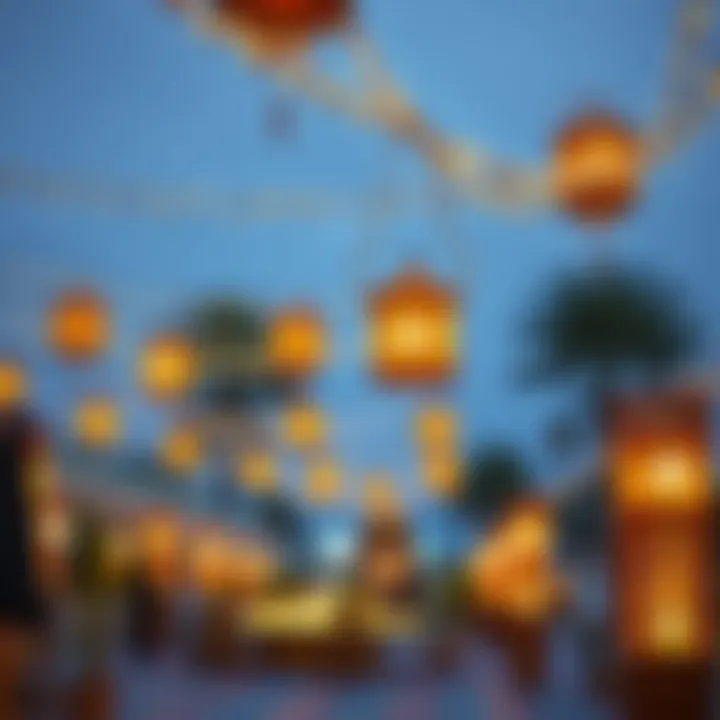
Intro
Eid al-Adha, often dubbed the Festival of Sacrifice, is a cornerstone of Islamic tradition, steeped in deep spiritual significance. It stands as a testament to faith, dedication, and the community spirit, celebrated by millions around the globe. This occasion allows Muslims to reflect not only on their ties to the divine but also on the importance of familial bonds and charitable acts. As we embrace this joyous time, extending heartfelt wishes is more than just a custom; it serves as a way to connect with others and share in the profound meaning of the festival.
In lieu of the significance of Eid al-Adha, knowing how to express appropriate wishes is crucial. A simple greeting can carry weight, bridging cultural gaps and bringing smiles to faces. From traditional phrases that resonate through generations to modern, creative expressions, there exists a rich tapestry of ways to convey your sentiments during this period. It’s a fine blend of respect, sensitivity, and a pinch of creativity that culminates in a sincere message.
This guide arms you with knowledge, illuminating various approaches you can take to extend your wishes. Whether you’re sending an SMS to a friend, posting on social media, or crafting a heartfelt card, having the right words can uplift the spirit of the occasion.
"To wish someone well on Eid al-Adha is not merely a greeting, but an invitation to join in the blessings of the season."
Join us as we unpack the essence of Eid al-Adha greetings, exploring traditional expressions, cultural nuances, and thoughtful ways to make each wish meaningful for family, friends, and even colleagues. Let’s dive into making this Eid al-Adha a harmonious occasion celebrated with love and respect.
Prolusion to Eid al-Adha
Eid al-Adha, known as the "Festival of Sacrifice," holds immense significance within the Islamic tradition. Every year, millions of Muslims across the globe commemorate this important day, which is not just about personal celebrations but also about a deeper connection to faith, community, and compassion. This fostering of relationships transcends mere physical sameness, as it promotes understanding and goodwill among diverse cultures and communities.
In this article, we aim to explore the different ways one can extend greetings and wishes during Eid al-Adha, recognizing its impact on social connections and faith expressions. The relevance of properly conveying wishes lies in the celebration's essence itself. Eid al-Adha emphasizes shared values, like love, sacrifice, and unity, and it is reflected in the words we choose to express our feelings toward one another.
It's not only essential to respect traditions but also to understand their deeper meanings. Whether one is in a position of providing a greeting for family members, friends, or professional colleagues, the attention to detail in these messages can uplift spirits and reinforce bonds. It all begins with acknowledging the historical background and the significance of the celebration, which set the stage for appropriate expressions of goodwill.
Historical Background
Eid al-Adha traces its roots back to the story of Prophet Ibrahim (Abraham), who faced a profound test of faith. According to Islamic tradition, Ibrahim was commanded by God to sacrifice his beloved son, Ismail. Just as the moment of sacrifice was at hand, God intervened, providing a ram instead. This act signifies not only obedience to God's will but also the value of sacrifice in one's life. It is from this event that Eid al-Adha derives its core themes.
Moreover, the significance of this holiday is amplified by its proximity to Hajj, the pilgrimage to Mecca, which is one of the five pillars of Islam. These intertwined histories create a rich narrative that informs how the celebration is observed around the world today. Each community may add its own flavor, but the core message remains universal: a call towards generosity, compassion, and humility.
Significance of the Celebration
Eid al-Adha encapsulates more than just the act of sacrifice. It symbolizes a plethora of ideals and practices that resonate deeply within the hearts of believers. For instance, it emphasizes the importance of charity through the practice known as Qurbani, where livestock is sacrificed and the meat distributed among the less fortunate. This act of giving reinforces the spirit of community and allegiance to social welfare, an aspect that's particularly poignant in tougher times.
Celebration during Eid al-Adha is marked by communal prayers, gatherings, and festive meals, creating a sense of unity. It’s a time when families and friends come together, reinforcing ties that may have stretched thin over time. Thus, the ways we express wishes and greetings during this time are essentially extensions of these sentiments, making them not just words but meaningful conduits of our emotions and intentions.
Understanding the Essence of Wishes
Wishing others well is an important part of any celebratory event, and Eid al-Adha is no exception. This festival is not just about exchanging gifts or enjoying feasts; it’s also about fostering connections and sending sincere wishes to those in our lives. Understanding the essence of wishes during this significant occasion helps enrich interactions. It’s about more than the words used; it’s about conveying genuine feelings of joy, respect, and solidarity.
At its core, wishing well serves several essential functions during Eid al-Adha. First, it strengthens bonds within families and communities. When you take the time to convey thoughtful wishes, it reassures others of their importance in your life. It fosters an atmosphere of goodwill and good cheer, which is vital during the festival.
Furthermore, the act of wishing reflects cultural values. It signifies recognition of the significance of Eid al-Adha, reminding us of the selflessness associated with the celebration—commemorating Prophet Ibrahim’s willingness to sacrifice. Traditional greetings capture these sentiments, allowing us to connect with the roots of the holiday.
Expressing the right wishes can lead to a sense of belonging and community. By understanding the nuances of greetings, one can avoid misunderstandings, ensuring that wishes are received in the spirit they are intended. Here are some clear benefits:
- Strengthens relationships: Thoughtful wishes can bridge gaps, especially if there has been distance or difficulty in communication.
- Promotes unity: Sharing heartfelt messages fosters a sense of togetherness in the community.
- Enhances emotional connection: Wishes that come from the heart can touch souls, making recipients feel valued.
In short, this aspect of wish-making holds power. It adds depth to our Eid celebrations, creating lasting memories and reinforcing cultural ties.
Importance of Proper Greetings
The importance of proper greetings during Eid al-Adha cannot be overstated. Greetings serve as the first impression, capturing the essence of the festivity. They reflect your respect for the traditions and beliefs held dear in the community. Utilizing appropriate phrases can help connect families and friends, bridging generations—whether it’s grandparents conveying wishes to their grandchildren or friends sharing joy.
When crafting these greetings, consider factors such as:
- Cultural relevance: Understanding traditional phrases shows your appreciation for the celebration.
- Personal touch: Tailoring your message can make it more impactful, making the receiver feel special and thoughtful.
For example, rather than giving a generic "Happy Eid," try saying, "May your sacrifices be accepted and your blessings be abundant." Such sentiments resonate more deeply. The warmth and sincerity behind your choice of words could be the spark that brightens someone's day.
Cultural Sensitivity in Expressing Wishes
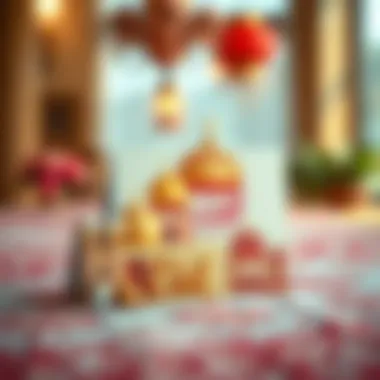
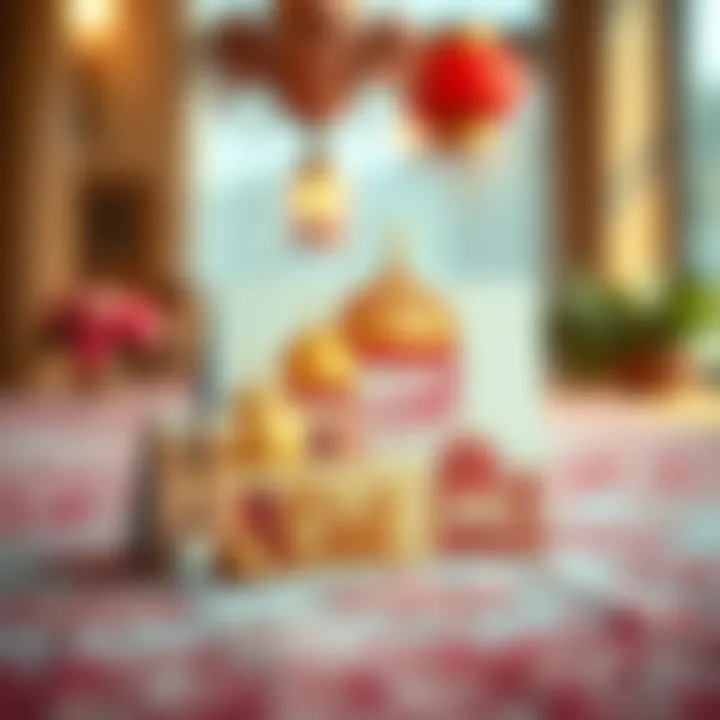
Cultural sensitivity is paramount when wishing others during Eid al-Adha. Different cultures might celebrate in varied manners, each with its own set of customs and practices. Understanding these nuances means acknowledging that not everyone will celebrate in the same way.
When expressing wishes, one must be aware of:
- Diverse backgrounds: Whether you’re addressing a close friend or an associate, respect their cultural context. A tailored message hints at your familiarity and admiration for their traditions.
- Inclusive language: Avoid phrases that could exclude or alienate. Instead of relying on personal anecdotes that might not resonate, opt for universally embraced sentiments.
For instance, consider variations: in some regions, people may prefer to focus on familial gatherings, while others may emphasize personal reflection. Striking the right balance can go a long way, ensuring your wish aligns with the recipient’s perspective.
By navigating these cultural dynamics respectfully, your wishes will carry the intended emotional weight, making the sentiments even more meaningful.
Traditional Greetings for Eid al-Adha
Eid al-Adha is more than just a holiday; it’s a heartfelt expression of faith, generosity, and community spirit. When it comes to sharing your wishes during this auspicious occasion, traditional greetings carry immense significance. They embody respect, familiarity, and a sense of unity among those who celebrate. Thus, engaging with well-known phrases and expressions can enrich relationships, ensuring that your greetings resonate with authenticity and warmth.
One of the most profound aspects of Eid al-Adha is the values of compassion and understanding that underlie the celebrations. By using traditional greetings, you not only adhere to these principles but also show appreciation for the cultural fabric that weaves through the community. Let’s uncover how and why these traditional phrases play a crucial role in this festive tapestry.
Common Phrases Used
When it comes to expressing well-wishes for Eid al-Adha, several phrases have stood the test of time. Here are a few that strike a chord:
- Eid Mubarak: This is probably the most recognizable greeting used on this day. Translated, it means "Blessed Eid," and it encapsulates the joy and blessings of the occasion.
- Taqabbal Allah منا ومنكم: Translating to "May Allah accept [good deeds] from us and you," this phrase emphasizes the spiritual aspect of the holiday.
- Kul ‘am wa antum bikhair: Meaning "May you be well throughout the year," this wish extends beyond Eid, fostering a sense of ongoing goodwill.
Using these phrases helps bridge gaps and foster connections, making your wishes feel more sincere and appreciated. Engaging with traditional greetings is like opening a door to shared values and beliefs.
Greetings in Arabic and English
Understanding greetings in both languages enriches the experience. For instance, while you might say "Eid Mubarak" in Arabic, its English equivalent remains the same but can be complemented with personal touches. This can include phrases like:
- "Wishing you a joyous Eid filled with happiness and peace."
- "May this Eid bring you and your family an abundance of blessings."
In Arabic, incorporating greetings like عید مبارک (Eid Mubarak) not only adds authenticity but also demonstrates respect for the language and culture, making recipients feel valued. Conversely, your English expressions might focus on the emotional resonance of the holiday, often delving deeper into personal connections, trust, and appreciation.
Ultimately, whether you opt for the traditional Arabic greetings or their English counterparts, the essence remains the same—spreading joy and fostering unity during one of the most cherished times of the year.
"Every wish shared is a thread woven into the fabric of community."
Embracing these traditional greetings fosters connections in a busy world, extending warmth and encouragement to those around you.
Wishing Family and Friends
Wishing family and friends on Eid al-Adha is not just a simple act of communication; it is a deeply rooted tradition that reflects love, respect, and gratitude. The essence of these greetings is to strengthen bonds and create lasting memories, particularly during such a meaningful celebration. Family members often look forward to well-crafted messages that convey the spirit of Eid, while friends appreciate thoughtful wishes that make them feel included in the festivities. Therefore, understanding the nuances of this practice is crucial for an impactful interaction on this joyous occasion.
Messages for Close Relatives
When crafting messages for close relatives, consider the shared experiences you’ve had together. Family ties are often stronger during festive times. Here are a few elements to include in your wishes:
- Personal Touch: Mention a specific memory or shared moment from the past. This could be a family gathering or an inside joke that symbolizes your relationship.
- Heartfelt Sentiments: Express your feelings, gratitude, or love. A simple phrase like "I'm grateful to have you in my life" can go a long way.
- Cultural References: Use phrases that are traditional in your culture. For instance, saying "Eid Mubarak" or even sharing a short prayer can enhance the authenticity of your wishes.
Here are a few examples of messages for close relatives:
- "Eid Mubarak! May your day be filled with love and affection, just like our family gatherings."
- "Wishing you a joyful Eid filled with peace and happiness. Can't wait to create more memories together!"
Wishes for Friends and Acquaintances
When it comes to friends and acquaintances, it is important to strike a balance between warmth and formality. Friends, especially, will appreciate sincerity in your greetings. Keep in mind the following elements when formulating your wishes:
- General Well-Wishing: Simple yet genuine messages work best. A phrase like "Wishing you a blessed Eid!" conveys your good intentions without being overly elaborate.
- Inclusivity: Show that you are thinking of them during this inclusive holiday. Emphasize unity, as Eid al-Adha is also about community and companionship.
- Add a Personal Note: If you feel comfortable, consider adding something personal that reflects your friendship, such as:
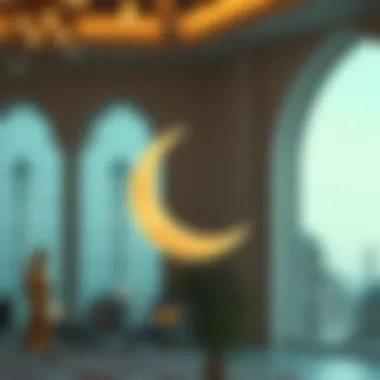
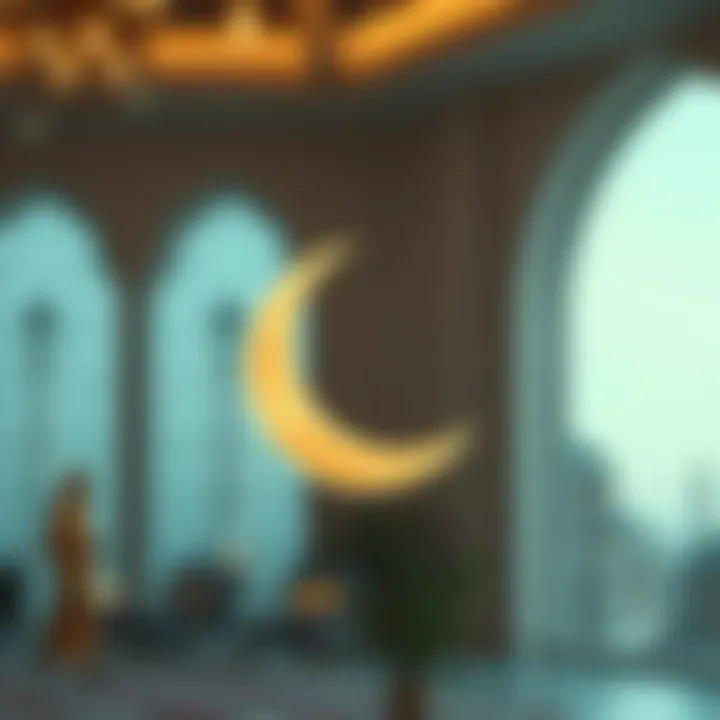
- "Hoping that your Eid is as wonderful as our times spent together!"
- "May the blessings of Eid nourish your soul and bring you joy every day."
Sharing wishes for friends and acquaintances can foster goodwill and reinforce connections. This festive season is the perfect opportunity to let them know that you value their presence in your life, no matter how far apart you may be.
"A kind word is like a seed sown in the hearts of others; it can grow and flourish into something beautiful."
Professional Greetings
In the context of Eid al-Adha, professional greetings carry a weight of significance that extends beyond mere formality. This occasion presents a unique opportunity to foster relationships in a professional setting. Whether you are sending wishes to a superior, a colleague, or a business associate, the way you articulate your greetings can reflect your values and respect for cultural diversity. In any industry, acknowledging this festive time not only upholds the spirit of goodwill but also strengthens professional ties.
Recognizing Eid al-Adha in the workplace can enhance camaraderie among team members and contribute to a healthy work environment. By thoughtfully crafting your messages, you demonstrate an understanding of your colleagues' traditions while also encouraging openness and acceptance within your professional sphere.
Business Correspondence Etiquette
When it comes to business correspondence, the tone is vital. Eid greetings should be respectful and warm, without veering into overly personal territory. Here are several guidelines to consider:
- Use Formal Language: Opt for greetings like "Eid Mubarak" followed by a brief note to express goodwill.
- Keep it Brief: Professional settings often call for concise messages. A few thoughtful lines can convey your respects adequately.
- Be Timely: Sending your greetings on the eve of Eid or early in the day is crucial to show you are attuned to the timing of the occasion.
"Acknowledging cultural celebrations within your workplace can bridge gaps, promoting inclusivity and diversity."
Adhering to these etiquette rules lays the groundwork for building rapport and shows that you are not just aware of Eid but genuinely care about your colleagues' celebrations.
Formal Wishes for Colleagues
Crafting formal wishes for colleagues during Eid al-Adha can be a straightforward yet impactful task. The intent is to communicate warmth without compromising professionalism. Here are examples that can inspire your own messages:
- Simple Wishes: "Wishing you a joyous and blessed Eid. May this special occasion bring you peace and happiness."
- Appreciation Message: "Happy Eid! I am grateful to work alongside such dedicated colleagues. May this Eid enrich our cooperation."
- Reflective Note: "On this auspicious occasion of Eid al-Adha, I wish you success and fulfillment in all your endeavors."
In expressing these wishes, you're not just marking an event; you're also promoting a positive work culture. Your thoughtful words can resonate with colleagues, inviting them to share their joy and strengthening workplace unity.
Creative Expressions of Eid Wishes
Creativity in expressing Eid wishes plays a significant role in enhancing the sentiment of the celebration. While traditional greetings serve their purpose, adding a personal touch can make your wishes even more special. Using unique elements like poetry and quotes gives depth to your messages, encouraging meaningful connections. Furthermore, the incorporation of digital greetings and e-cards allows you to reach out to loved ones, regardless of distance, fostering a sense of community during this important time.
Using Poetry and Quotes
Poetry has been a cherished form of expression throughout history, resonating with sentiments that everyday language sometimes fails to capture. By weaving verses into your Eid greetings, you elevate your message beyond mere words. For example, utilizing well-known quotes from prominent Islamic figures or creating your own poetic wishes can reflect personal feelings, making your thoughts resonate on a deeper level.
Consider the emotional connection that a simple couplet can invoke. For instance, using lines like, "May your heart be filled with peace and joy, and your home surrounded by loved ones," can spark warmth and positivity in the recipient. As well, quotes like, "Eid Mubarak! May the guidance of Allah be with you today and always" captures the essence of the occasion succinctly.
Benefits of using poetry and quotes include:
- Emotionally resonant: Taps into the feelings of the season.
- Timeless: Engages with deep-rooted traditions and beliefs.
- Distinctiveness: Sets your greetings apart from standard phrases.
Choose wisely, and don’t hesitate to let your creativity flow.
Digital Greetings and E-Cards
In our fast-paced world, digital greetings and e-cards offer a modern twist on traditional celebrations. E-cards come in a variety of themes, from elegant and formal to fun and playful. They allow for tailored messages that can include personal touches such as pictures of family or cherished memories, making your greeting stand out. You can find exceptional platforms like Canva or American Greetings where you can customize messages that reflect your feelings about Eid al-Adha.
When sending digital wishes, it's important to keep a few considerations in mind:
- Visual appeal: Choose designs that resonate with the spirit of Eid. Look for bright colors and festive motifs.
- Personalization: Include specific elements that remind you of the recipient, whether it’s a mutual joke or a shared memory.
- Accessibility: Make sure your e-card platform is user-friendly so that even those who are not tech-savvy can enjoy your warm wishes.
"A simple message can turn into a heartfelt one through the right medium."
Ultimately, creative expressions of Eid wishes ought to reflect individual connections. Whether through poetry or digital formats, these forms of communication serve as a bridge, linking people together in celebration and remembrance of what truly matters during Eid al-Adha. By embracing creativity, your wishes can foster joy, foster connections, and create lasting memories.
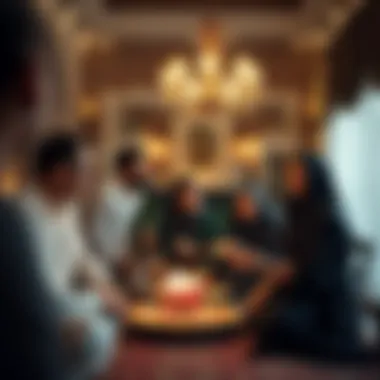
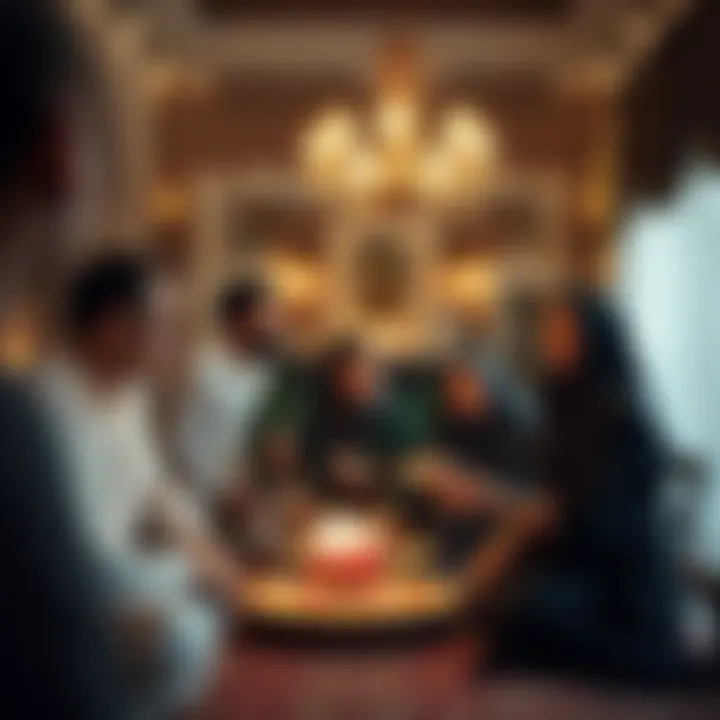
Wishes Across Different Cultures
Understanding how to express Eid al-Adha wishes varies greatly across different cultures. This cultural diversity enriches the celebration and fosters a deeper appreciation for the festival. When wishing someone Eid greetings, there's a beauty in honoring each community's unique way of conveying joy and goodwill. The strength of Eid lies not just in its religious significance but also in the collective human experience shared through these customs and greetings.
Variations in Greetings Around the World
Greetings for Eid al-Adha are not just translations of a phrase; they express emotions and sentiments rooted in the culture of the speaker. Here are a few prominent phrases that reflect these variations:
- In Turkey: "Bayramınız kutlu olsun!" meaning "May your holiday be blessed!" This reflects an emphasis on blessings in Turkish culture.
- In Indonesia: "Selamat Idul Adha!" is commonly used, highlighting the festive spirit prevalent in one of the world’s largest Muslim populations.
- In Arabic-speaking countries: Many opt for the heartfelt "Eid Mubarak!", which means "Blessed Eid!" This remains the most recognized greeting and transcends linguistic barriers, appealing universally to both friends and strangers alike.
These greetings are often accompanied by gestures of goodwill such as hugs or handshakes, which can vary significantly from one culture to another. Additionally, community celebrations may include communal prayers and acts of charity, reflecting the essence of Eid where the spirit of giving and togetherness reigns supreme.
Understanding Local Customs
Each culture has its own customs and traditions associated with Eid that influence how wishes are conveyed. Recognizing these local practices can enhance the meaning behind the greetings offered. Here are some customs that illustrate this:
- In South Asia, the festival is often marked by family feasts, and sending wishes may be accompanied by the sharing of sweets. The expression of wishes thus becomes a two-fold celebration of verbal greetings and tasty treats. Sending a message along with a box of traditional sweets can add a personal touch.
- In Middle Eastern countries, gatherings after prayers are typically hosted where families come together. Greeting neighbors and friends during these gatherings helps foster connections. Saying "Eid Mubarak" before partaking in shared meals strengthens communal ties and reinforces bonds.
- In Africa, greetings may vary greatly between urban and rural settings. In a city like Lagos, electronic greetings through social media platforms like Facebook or WhatsApp are common, while rural areas may prefer in-person visits and handshakes. Acknowledging the preferred method of communication underscores the importance of cultural sensitivity.
By embracing and understanding these varied customs, not only do we enrich our own experiences but we also honor the traditions of others, creating a tapestry of celebration that truly embodies the spirit of Eid.
Exploring the multitude of ways to convey heartfelt Eid al-Adha wishes across cultures allows everyone to participate meaningfully in the celebration. Each greeting serves to connect us not just to our individual communities but to the worldwide Muslim community as a whole. Whether through words or actions, thoughtful expressions help bridge divides and foster a sense of belonging.
The Role of Community in Eid Wishes
The essence of Eid al-Adha extends beyond individual celebration to encompass the broader community. This festival, rooted deeply in shared values of sacrifice, charity, and unity, thrives on collective experiences that bring people together. When wishing others during this significant occasion, it’s crucial to recognize how community plays a pivotal role.
One of the most profound aspects of Eid is its ability to foster connections among people. Community gatherings serve as a backdrop for reinforcing relationships, both within families and among friends. It is in these gatherings where Eid wishes evolve from mere expressions to heartfelt sentiments that bind individuals together. A simple greeting can ignite warmth, reflecting the spirit of togetherness celebrated during this time.
Communal engagement encourages a deeper understanding of each other’s traditions, enhancing the way we share Eid al-Adha wishes. Whether through communal prayers at mosques or neighborhood festivities, these shared moments shape how greetings are crafted and received.
"The heart of Eid lies not just in the festival itself but in the connections made and the communities strengthened during this cherished time."
Community Gatherings and Greetings
Community gatherings during Eid al-Adha are multifaceted, ranging from prayers to shared meals. These interactions provide a fertile ground for exchanging wishes that resonate with meaning.
- Prayers at Mosques: The congregation often begins with special prayers, elevating the spiritual significance of the occasion. Wishing others at this moment can amplify the feeling of blessing.
- Festive Meals: Breaking bread together creates bonds. Wishing others well as you share food is not only courteous but rewrites the norms of casual greetings into something much richer.
- Neighborhood Events: Local celebrations can vary widely, yet they all aim to build harmony. Participating in and wishing those around you during these events underscores the essence of community.
In essence, an acknowledgment of these gatherings allows individuals to elevate simple greetings into participatory acts that strengthen communal ties.
Building Connections through Eid Wishes
Crafting Eid wishes with a community focus adds layers of connection that plain greetings lack. A wish is more than just words; it’s a bridge connecting different backgrounds, beliefs, and cultures. When approaching these wishes, consider the following:
- Personalization: Tailoring your message to reflect community experiences, shared memories, or communal goals can deepen the impact. Instead of a generic “Eid Mubarak,” consider acknowledging a shared event or memory.
- Inclusivity: Remember not only those within your immediate circle but also neighbors and acquaintances. A broader reach can foster goodwill, leading to stronger community bonds.
- Sincerity: Authenticity in your wishes can resonate more deeply than ornate phrases. A heartfelt message will likely evoke a fuller emotional response.
Utilizing these points to frame your Eid greetings allows for the nurturing of relationships within the community. The practice of connecting through wishes facilitates a sense of belonging, reminding us all that during Eid al-Adha, we are part of something larger, something that matters.
For more insights on etiquette and traditions associated with Eid, you may find helpful resources at Wikipedia and Britannica.
Epilogue and Final Thoughts
Wishing others during Eid al-Adha is more than just a polite custom; it holds deep meaning and reflects respect for shared traditions. The conclusions drawn from this article underscore how thoughtful wishes can foster connections, promote goodwill, and enrich cultural understanding among diverse communities. By exchanging wishes, we acknowledge not only the larger significance of the festival but also the bonds that tie us to those around us.
In this guide, we explored various ways to express Eid greetings. Each section highlighted a crucial aspect of wishing, from traditional phrases to the significance of cultural sensitivity in communication. It is essential to remember that each wish is a gateway to goodwill, breaking the barriers of language or geography. Offering an Eid greeting, whether to family or strangers, can ignite joy and strengthen relationships, creating a warm atmosphere during this sacred time.
Recap of Key Points
- Eid al-Adha wishes serve as a bridge between hearts, enhancing connections within families, friends, and communities.
- A wide range of traditional and contemporary phrases exists, making it easy to choose appropriate greetings for any relationship or setting.
- Understanding cultural nuances when wishing enhances respect and prevents misunderstandings, reinforcing the global importance of Eid al-Adha.
Encouragement for Thoughtful Wishes
As the festivities approach, it's vital to approach the task of wishing with intention and thoughtfulness. Consider the recipient's feelings, customs, and traditions, and personalize your messages where possible. A simple gesture, like sending a message via text or creating an e-card with a heartfelt note, can have profound effects on how your wishes are received.
Take a moment to tailor your greetings and make them resonate—share a memory, a personal note, or a reflection on the significance of the day. Remember, it's not merely the words that count, but the meaning and sincerity behind them.
In today's interconnected world, let’s strive to keep the spirit of Eid alive by crafting greetings that truly capture the essence of this beautiful celebration. Your thoughtful wishes will not only enrich your relationships but also contribute to a more compassionate and understanding society.







